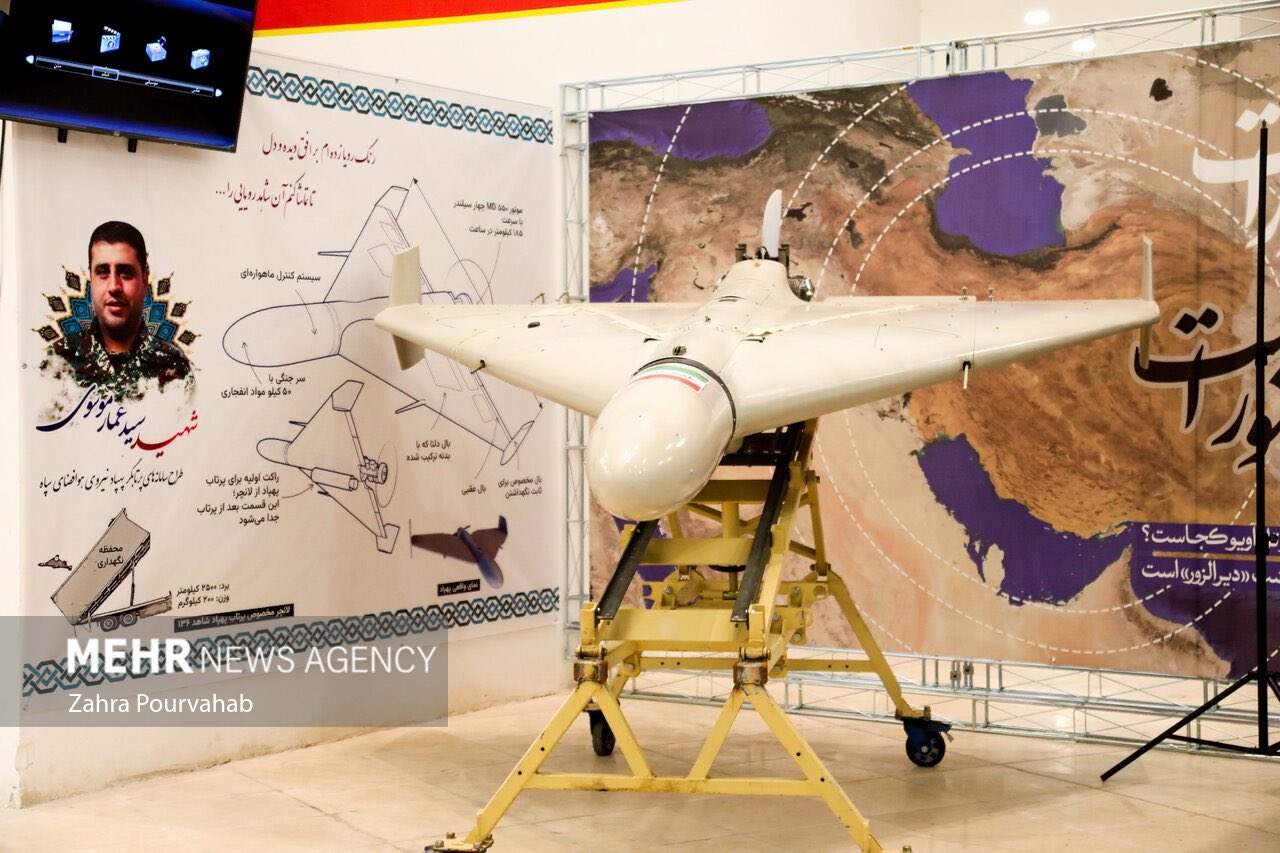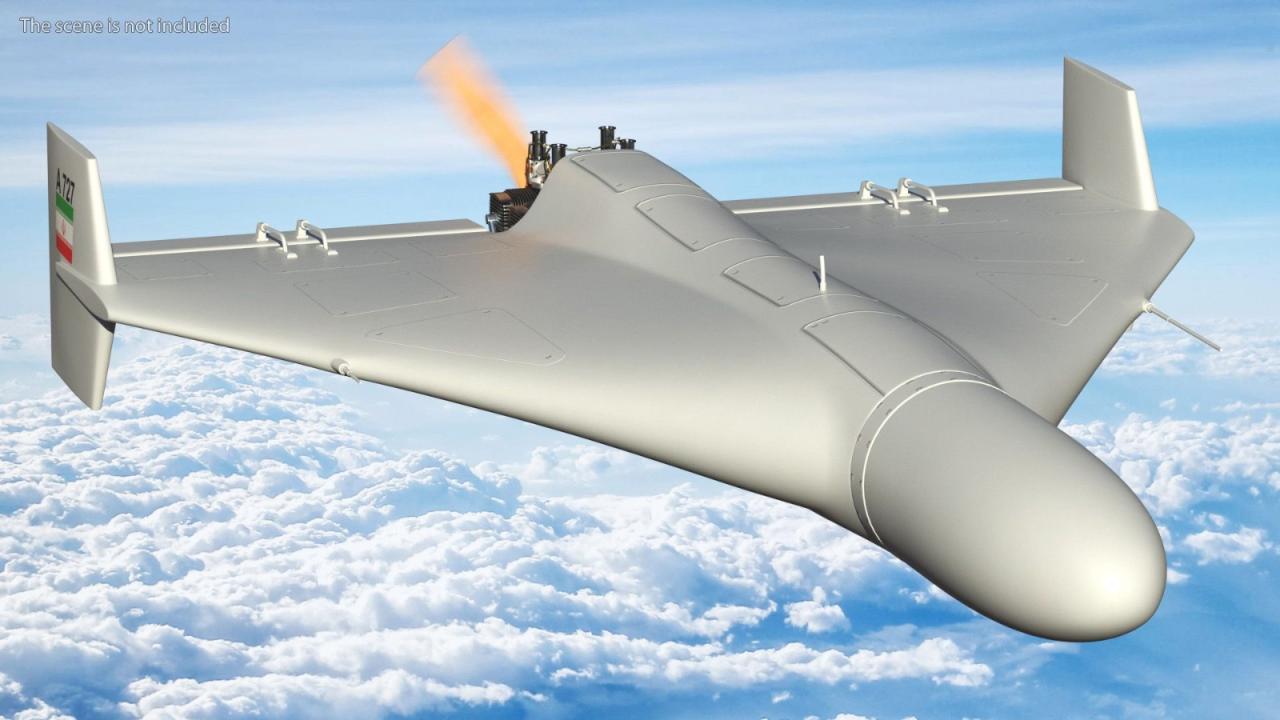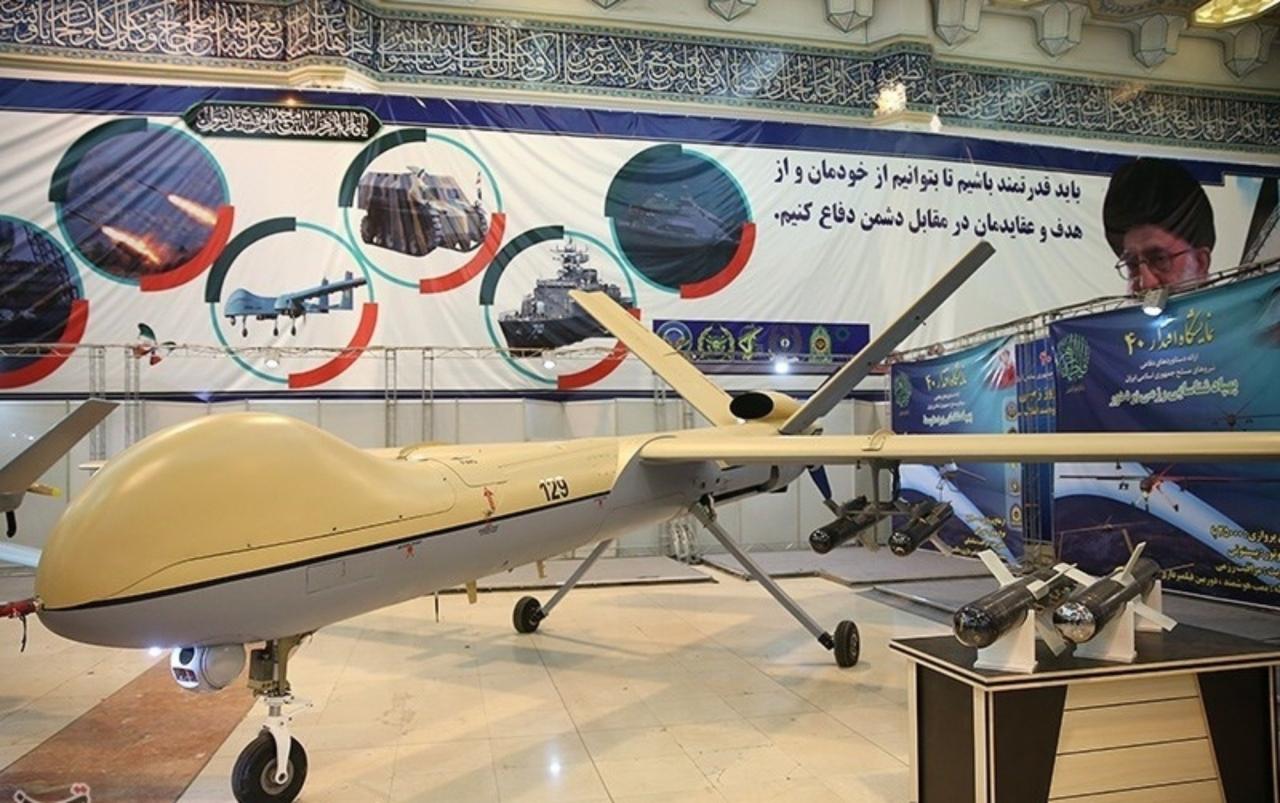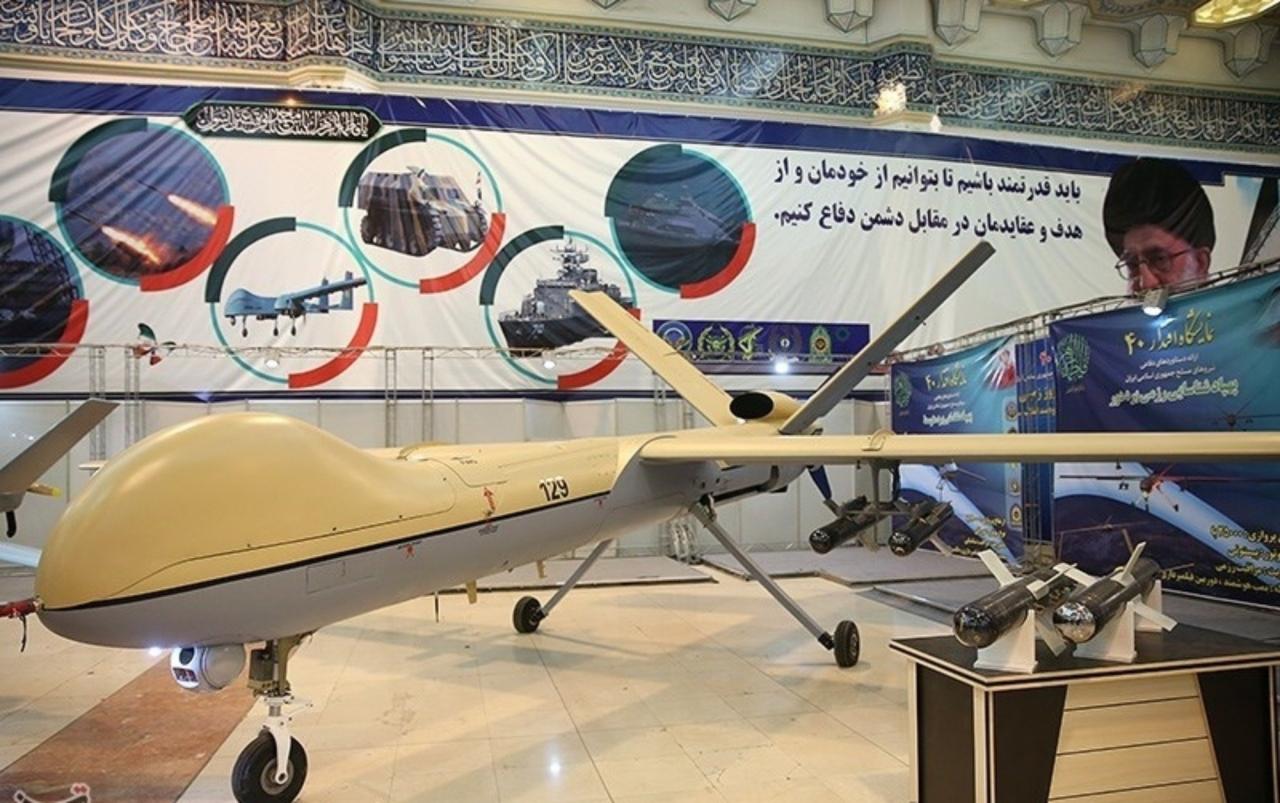Shahed drones, inexpensive and readily available, have become a significant factor in modern warfare. Their relatively simple design, coupled with their devastating potential, has sparked global concern and prompted significant research into effective countermeasures. This exploration delves into the design, capabilities, deployment, impact, and future of these controversial unmanned aerial vehicles (UAVs).
From their origins and manufacturing processes to their tactical deployment and the ethical implications of their use, we will examine the Shahed drone’s multifaceted role in contemporary conflicts. We will also explore the technological advancements and potential future developments of this technology, considering both its military applications and its potential for civilian use.
Shahed Drone: A Comprehensive Overview

The Shahed drone, a relatively low-cost, expendable unmanned aerial vehicle (UAV), has gained significant attention due to its widespread deployment in various conflicts. This overview delves into its design, operational capabilities, manufacturing, deployment tactics, countermeasures, impact, and potential future developments.
Shahed Drone Design and Specifications

The Shahed drone’s design emphasizes simplicity and affordability, contributing to its mass production and deployment. Its physical characteristics and operational systems are key factors in its effectiveness.
| Characteristic | Specification | Characteristic | Specification |
|---|---|---|---|
| Wingspan | Approximately 2 meters (Varying slightly depending on model) | Weight | Approximately 200 kilograms (Varying slightly depending on payload) |
| Length | Approximately 3.5 meters (Varying slightly depending on model) | Materials | Composite materials, including fiberglass and possibly carbon fiber components. |
| Propulsion | Internal combustion engine, likely using gasoline or a similar fuel. | Payload Capacity | Variable, typically carrying a high-explosive warhead ranging from 40 to 50 kg. Some variants may carry other payloads. |
Shahed Drone Operational Capabilities
The operational capabilities of the Shahed drone contribute to its tactical versatility and effectiveness in asymmetric warfare scenarios.
The Shahed drone boasts a flight range estimated to be between 1000 and 2000 kilometers, depending on weather conditions and payload. Its endurance is typically reported to be around 6 to 10 hours. Navigation is achieved through a combination of inertial navigation systems and potentially GPS, with some models potentially incorporating satellite-based augmentation systems. Operational altitude is relatively low, typically below 3,000 meters, maximizing stealth and reducing detection probability.
Speed is reported to be around 180 km/h.
Shahed Drone Manufacturing and Production

The manufacturing and production of Shahed drones involves a complex network of entities and countries, making precise attribution challenging.
Iran is widely believed to be the primary manufacturer of Shahed drones. The estimated production cost is relatively low, enabling mass production and widespread deployment. The supply chain likely involves both domestic and international sources for various components. Precise details on the scale of manufacturing and the full extent of the supply chain remain unclear due to the clandestine nature of the operation.
Shahed Drone Deployment and Tactics
The deployment methods and tactics employed for Shahed drones demonstrate their adaptability to various operational environments.
- Deployment is typically carried out from land-based launch sites, often mobile and dispersed to enhance survivability.
- Swarms of drones are frequently used to overwhelm air defenses.
- Attacks are often launched at night or during periods of reduced visibility to increase the chances of success.
- Targets are often selected based on their strategic or symbolic importance.
Compared to other UAVs, the Shahed drone’s deployment often involves a greater reliance on numbers and the saturation of air defenses, rather than sophisticated targeting systems or high-end sensor packages.
Shahed Drone Countermeasures and Defenses
The effectiveness of various countermeasures against Shahed drones varies significantly, and their limitations pose considerable challenges to air defense systems.
| Countermeasure | Effectiveness |
|---|---|
| Electronic Warfare (Jamming) | Moderately effective, but can be countered with robust GPS signals and inertial navigation. |
| Anti-aircraft Artillery (AAA) | Effectiveness varies significantly depending on the range and accuracy of the AAA system. High success rates against concentrated attacks, but less effective against swarms. |
| Man-Portable Air-Defense Systems (MANPADS) | Can be effective against individual drones, but requires precise aiming and is less effective against swarms. |
A hypothetical air defense strategy against Shahed drone swarms would involve a layered approach, combining electronic warfare, long-range air defense systems, and short-range air defense systems, along with robust intelligence gathering to predict attack routes and timing.
Shahed Drone Impact and Consequences
The deployment of Shahed drones has had a significant impact, both militarily and on civilian populations.
Shahed drone attacks have caused damage to civilian infrastructure and resulted in casualties. The strategic impact is demonstrated by their ability to disrupt operations and create fear and uncertainty. The psychological impact is considerable, leading to widespread anxiety and fear among populations in targeted areas. The international legal and ethical implications are complex, raising concerns about proportionality and the targeting of civilians.
Shahed Drone Technological Advancements and Future Developments
Future developments in Shahed drone technology could significantly enhance its capabilities and expand its applications.
Potential advancements include improved range, payload capacity, and autonomy. The integration of more sophisticated guidance systems, enhanced sensor packages, and artificial intelligence could significantly improve their effectiveness. Furthermore, improved materials and propulsion systems could lead to longer endurance and increased speed.
- Improved precision targeting systems
- Integration of advanced sensors for enhanced situational awareness
- Increased autonomy for more complex missions
- Development of specialized payloads for different mission profiles
Beyond military applications, potential future applications include search and rescue, environmental monitoring, and infrastructure inspection.
The Shahed drone represents a paradigm shift in asymmetric warfare, highlighting the increasing accessibility of sophisticated military technology. While their low cost and ease of deployment pose significant challenges, ongoing research into countermeasures and a deeper understanding of their operational capabilities are crucial for mitigating their destructive potential. The future of warfare will undoubtedly be shaped by the continued evolution of this and similar technologies, demanding a comprehensive and adaptable approach to defense and security.
Clarifying Questions
What is the lifespan of a Shahed drone?
The operational lifespan varies depending on usage and maintenance, but it’s generally considered to be relatively short compared to more sophisticated drones.
The Shahed drone’s relatively low cost and ease of production have made it a significant factor in recent conflicts. Understanding its operational capabilities often requires assessing environmental conditions, such as those shown by the coquihalla weather camera , which could influence flight patterns and effectiveness. Ultimately, the Shahed drone’s impact is multifaceted and necessitates a comprehensive analysis of various factors.
How accurate are Shahed drones?
Their accuracy is debated and varies based on factors like weather conditions and operator skill. They are generally considered less precise than more advanced guided munitions.
Are Shahed drones reusable?
The Shahed drone, a relatively inexpensive but effective weapon, has garnered significant attention for its use in various conflicts. Incidents involving unmanned aerial vehicles are not uncommon, and a recent example highlights this, as you can see from this news report on drone crashes in New Jersey. This underscores the broader concerns surrounding drone technology and its potential for misuse, a concern that extends beyond the Shahed drone’s specific capabilities.
Typically, Shahed drones are considered expendable and not designed for reuse after a mission.
What is the range of a Shahed drone’s communication link?
The exact range is classified information but is believed to be dependent on several factors, including terrain and interference.
